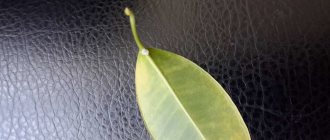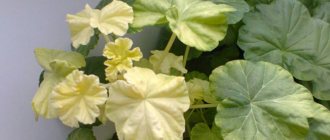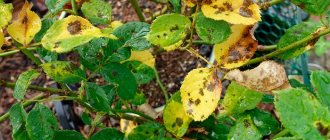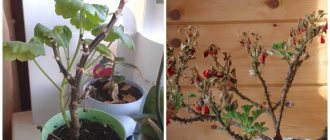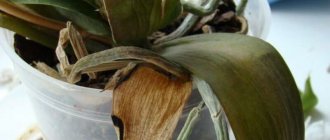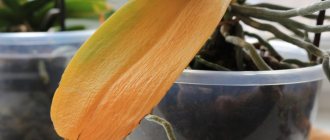Unpretentious, easy-to-care spathiphyllums can be found in apartments and offices; they decorate public buildings and provide landscaping for educational institutions. Without any tricks or labor on the part of the owner, in response to normal care, the spathiphyllum flower produces new lanceolate foliage and produces peduncles with a white, flag-like or blanket-like bract.
However, this wonderful plant may also have problems, which it signals by all available means, for example, by changing the color of the leaves, their withering or drying out. Why do spathiphyllum leaves turn yellow, and what should a gardener do in this case?
Feeding and replanting - necessary care for spathiphyllum flowers
Yellowness on the leaves of a recently healthy green bush appears quickly and can be a sign of a variety of problems. Due to the similarity of symptoms, even experienced hobbyists are rarely able to immediately find the reason for this plant behavior. But you cannot hesitate, since the death of the foliage entails a general weakening of the spathiphyllum, and sometimes can signal irreversible putrefactive processes on the roots.
Most often, the source of problems with spathiphyllum is in the care of the flower, or rather, in the lack of attention to the plant.
If the plant has bloomed profusely and for a long time, yellowing leaves may indicate fatigue of the bush, which has wasted all its strength and available nutrients. In this case, the foliage from the lower tiers is the first to begin to experience a similar deficiency, evenly changes color, and then withers.
Feeding can help the plant, and if the yellowed spathiphyllum has not been replanted for a long time, then transferring it to a new, looser pot with nutritious loose soil.
In the future, in order to avoid similar problems, you need to feed the plant twice a year and, if necessary, in the spring, replant the bush into a pot of the same size.
Why do spathiphyllum leaves turn yellow?
The main causes of damage, yellowness on leaves, causes and treatment:
- Peduncles and leaves turn yellow and wither. The soil surface is dry. We increase the humidity around the plant, not forgetting about the soil. If it dries out quickly, it should be moved to a cool place.
- The leaves are damaged and dotted with small green insects. Green leaf aphid. It is necessary to spray the plant every two times a month with an insecticide until it is completely clean.
- The leaves have drooped. The soil surface is damp, with mold and rot. Too damp. Check the pot's drainage hole. Allow the soil to dry thoroughly before watering again.
- New leaves appear, but the plant does not bloom. The plant is too old or needs feeding, or is too dark. If the plant is three or four years old, then it needs to be divided. Requires full light in winter and partial shade in summer.
- The leaves have turned yellow and cobwebs are visible on their lower parts. Red spider mite. We apply spraying once every 2 weeks with a solution of karbofos until complete cleansing.
- The leaves are limp, soft and rotting. Too cold. Move the pot to a warm place (the optimal temperature in winter is about 16-18˚C). Water the spathiphyllum with water at room temperature, avoid letting the soil dry out.
Lighting for spathiphyllum
Spathiphyllum turns yellow when it is in uncomfortable conditions for a long time. The most common mistake gardeners make is exposing the pot to direct sunlight. Although spathiphyllum is very light-loving, the scorching, especially summer sun causes yellowness and even burns of the leaf blades. But with a lack of sun, spathiphyllum reacts with slower growth and pale leaves.
If in summer the main enemy of the plant is the bright sun, then in winter excessive dry air is detrimental to spathiphyllum.
When the pot is located close to heating devices, it is unlikely that it will be possible to avoid withering of the above-ground parts and yellow ones. Yellowing and then death of the leaf begins from the tip, gradually spreading and occupying most of the leaf blade. As a result, the plant weakens, stops flowering prematurely and may die.
Therefore, if you want to see the plant healthy and beautiful, you can:
- remove spathiphyllum away from the battery;
- place a container of water nearby;
- use a humidifier;
- use a spray bottle to spray the plant.
In any case, the plant will respond with lush greenery. Slightly damaged leaves regain their previous color, and it is better to remove leaf blades that have begun to dry so that they do not become a breeding ground for harmful fungi and pests.
Description of the plant
This indoor plant can be easily identified among the other inhabitants of the winter garden. It has no stem, the leaves grow directly from the ground and are richly green in color. The midrib is clearly visible on the leaf blade.
The flower is a yellowish-white spadix, surrounded by a snow-white leaf, in the form of a drop, located on a high peduncle. The white bedspread is sometimes decorated with greenish inclusions. During flowering, it acquires a uniform green color.
Spathiphyllum turns yellow due to a violation of the watering schedule
If the leaves of a spathiphyllum turn yellow, and the color change begins from the edges of the leaf plate, on which a dried black border is formed, this may be a reaction of the flower to a violation of the watering regime:
- With a lack of moisture, the soil dries out and does not provide the plant with proper nutrition.
- Excessively moist soil, especially at a fairly low indoor temperature, is a serious risk for the development of rot and fungi parasitizing on spathiphyllum.
It is optimal if the substrate is constantly moist, but stagnation of moisture should not be allowed.
Therefore, in winter the intensity and frequency of watering is reduced. And in the summer, when the need for moisture increases, to reduce evaporation, the soil is mulched with pebbles or sphagnum moss.
Is watering necessary or not?
This is the most important point in caring for home spathiphyllum. Flower growers suggest what mistakes should be avoided so as not to destroy the flower:
- Inspect and determine the condition of the soil at the bottom of the pot.
- As an option, plant the flower in a transparent pot, where the condensation can be clearly seen. Its absence will remind you of the need for watering.
- Lower a wooden stick without bark into the ground to the bottom of the container. After 12-14 minutes, you can accurately determine the moisture level from it. It will be clearly visible.
- You can use special beacons that are sold in a flower shop. Install them directly into the soil. When the humidity level changes, the beacons change color at a certain height. This is a sign that watering is needed.
It is important not to overdo it with watering! For some plants, excessive watering is as destructive as its lack.
Micronutrient deficiency is the cause of yellowing of spathiphyllum
What to do if the entire spathiphyllum leaves turn yellow? Most often, this symptom can be considered a sign of nutritional deficiency or deficiency of certain elements in the soil. First aid in this case is feeding with complex fertilizer for indoor plants. If the roots of the flower are completely entwined with the earthen ball, then it is better to immediately replant the plant, and, if necessary, divide a large bush.
Spathiphyllum is very sensitive to magnesium deficiency. A deficiency of this element leads to stunted growth and lethargy of the plant. In this case, the spathiphyllum leaves turn yellow in such a way that the veins remain green, and the tissues between them become yellow or brown. Such bushes are fed with magnesium sulfate.
Care errors leading to yellowing of leaves
Illumination
Uncomfortable conditions for a long time are one of the main reasons for the unsightly appearance of the plant and even disease. The bright sun in summer has a detrimental effect on the life of spathiphyllum, although it is considered a light-loving plant. But summer brightness causes yellowing and can even burn the leaf blades. It should be noted that a lack of solar energy slows down the growth of the flower and the leaves turn pale.
The edges of the leaves turn yellow
When the flower is located near heating devices, and it is not possible to move the pot to a more suitable place, the following means should be used:
- place any container with liquid (water) near the flower;
- constantly humidify the air;
- spray the flower twice as often as usual.
Particular attention should be paid to the fact that the withering of leaves begins precisely from their tip.
It is important not to miss the moment and take all necessary measures. Minor damage to the leaf blade can be prevented and the previous color restored, but significantly dried leaves after removal will not spread various types of pests.
These techniques are not complicated, but they will help keep the spathiphyllum looking beautiful and healthy. Then the flower will delight you with gorgeous green foliage and abundant blooms.
The soil
It happens that most of the rules in care are followed, but there are visible causes of damage or disease to the roots. The leaves turn yellow and black en masse and the measures taken do not produce results. The reason may be completely unsuitable, unsuitable soil.
You need to be thoroughly convinced of this. The earthen lump should be removed and the spathiphyllum should be examined. If a slight blackening of the edge of the root system is noticeable, that is, along the contour of the earthen lump, the plant can still be saved. There is an urgent need for a transplant. The optimal mixture for this ornamental plant will be the following soil mixture composition, in the following proportion: 1:1:1:0.5:
- peat;
- leaf soil;
- humus;
- coarse river sand.
It is advisable to add charcoal, which protects the roots of the plant from rot and other pests. Crushed brick together with pine bark will provide soil aeration and increase moisture content.
After transplant
The traditional and most favorable time for replanting (transferring) any indoor plant is spring - March or April. But when it comes to emergency urgent measures to save a flower, the timing varies according to need. Spathiphyllum needs to be replanted after watering, then the soil will not crumble from the roots when removed from the container. After a while, the water will be absorbed, carefully turn the flower down and hold the plant at the base of the stem. You can lightly tap the bottom of the flower pot.
Be sure to provide a good drainage hole. For ornamental plants, the preparation of the component components for water drainage is very important. The liquid should seep through unhindered so that air can flow freely to the roots.
Excellent drainage is an important condition for crop growth!
For drainage, use broken shards, small expanded clay, and coarse gravel; moss or sand so as not to clog the hole; after the soil. When the plant is lowered into the pot, add soil and lightly compact it without pressing too hard. Water moderately and create a period of rest for the flower to grow new roots.
Optimal watering schedule
Changes in the color of the leaf plate are possible, when the leaves become yellow and a dried black border is noticeable at the edges. This indicates the need for precise regulation of watering. The following mistakes should be avoided:
- A dry earthen ball indicates insufficient moisture and prevents the full growth of the plant.
- A waterlogged lump in a room with a low temperature also creates conditions for the proliferation of various parasites on the spathiphyllum (rot and fungi).
- The most suitable option is when the substrate is constantly wet, but without stagnating moisture.
- In winter, watering should be moderate and infrequent. In summer, when the need for moisture increases, mulch is used in the form of pebbles or sphagnum moss), thereby reducing evaporation in the soil. Heating radiators can be covered with a damp towel or thick blanket.
Trace elements are an important component of the female flower
Flower growers often panic - the leaves have turned completely yellow! Most likely, the cause of this manifestation is a nutritional deficiency or an insufficient amount of certain elements in the soil. You need to act immediately, every hour is important. Flower growers use complex fertilizers for certain indoor plants of any production.
Another option for resolving a similar situation is possible, when the earthen ball is entwined with roots very tightly, strongly. Such a flower needs urgent replanting or even dividing a large bush into parts. Take into account the time of year. If absolutely necessary, division can be carried out both in winter and summer. You just have to do this with extreme caution and trepidation. This is a trauma for the plant.
Magnesium sulfate does not pollute the soil; it is able to accumulate and improve the development of plants during transplantation.
The lack of such an element as magnesium is noticeable in the retardation of plant growth and its lethargy. This deficiency manifests itself in such a way that the veins on the leaf remain green, while the tissue between them noticeably turns yellow or turns brown. Fertilizing with magnesium sulfate is urgently needed.
Pests and diseases of spathiphyllum
Yellow foliage is not only a consequence of improper care of the spathiphyllum flower. Plants can be affected by pests and diseases that are no less dangerous than lack of nutrition or flooding of roots.
Among the pests that cause damage to plants, mealybugs, spider mites and thrips are more common. In this case, after identifying the source of danger:
- bushes are treated with insecticides;
- if soil pests are present, replant and feed.
As a preventive measure, it is reasonable to take only disinfected soil, which will help protect the bush from infection by harmful fungi.
We can talk about a disease of fungal origin in a situation where the lower leaves of the spathiphyllum turn yellow, begin to dry out, and brown spots, growing, occupy the foliage in the neighborhood. If urgent measures are not taken, the disease will invade the stems and roots, causing irreparable damage to the plant.
In this case, the infected parts of the plant will have to be cut off and treated with a fungicide. It would be useful to inspect the roots and shortened stem, since the spread of the fungus may be accompanied by the proliferation of putrefactive bacteria and damage to these parts of the plant.
Spathiphyllum is not at all capricious, but only a healthy plant that receives regular competent care can delight the gardener with bright greenery and abundant flowering.
The appearance of insect pests
The appearance of a flower can change not only due to poor care, but also due to pest attacks.
Did you know? Spathiphyllum is popularly called
"
women's happiness
"
. According to legend, the Greek goddess of love, Astrada, breathed into this flower a piece of happiness that overwhelmed her on her wedding day, so that every other girl could feel it, believing in the power of the flower.
Thrips
This is a small pest insect with a narrow elongated body and two wings, penetrating the leaf with the help of a tiny proboscis and sucking out all the juices from it. They arise due to lack of moisture, stagnant air, and excess nitrogen in the soil.
Signs of the pest are:
- small brown dots on leaf blades;
- young leaves and flowers become deformed and decrease in size;
- old leaves become covered with spots or a silvery coating and die;
- openwork areas on leaf plates.
You can fight insects using folk or chemical means. But before you start processing the plant, you need to carefully examine it, remove the affected foliage, and burn the diseased flower stalks. Using a cotton swab, collect all the larvae, and wash off the adult insects with a warm shower. Then it is advisable to transplant the flower into new soil and pot, and dispose of the old ones. Now you can carry out treatment with one of the products in case not all pests were destroyed by previous procedures.
Traditional recipes:
- Pour 50 grams of crushed dandelions into a liter of water and leave to steep for 24 hours. Spray the plant with the solution.
- Pour 0.2 kg of chamomile flowers with a liter of boiling water and leave to brew for 10 hours. Strain and spray the flower several times a day for a week.
- 0.1 kg of crushed tobacco should be poured with a liter of boiling water and left for several days. Strain the infusion and treat the entire plant.
Chemicals:
- "Aktellik". 1 ampoule of the product is diluted with a liter of water and used to treat the flower. After the procedure, the spathiphyllum should be covered with a bag for 24 hours.
- "Aktara". 4 g per 5 liters for spraying. Repeat after 7 days.
- "Fitoverm". 2 ml per 200 ml of water for spraying. After the procedure, the flower must be covered with polyethylene for 24 hours.
Find out what to do if spathiphyllum does not bloom.
Mealybug
Small (up to 10 mm in length) multi-legged insects with a round, oval or elongated body covered with a white waxy film. Their head is practically inseparable from their body. They lay white, translucent, round-shaped eggs. Appear due to:
- low temperature;
- increased soil moisture;
- contaminated soil;
- untimely removal of dead parts of the flower.
The parasite usually hides on the inside of the leaf and covers its surface with sticky secretions. If the pest is just discovered, it can be collected with a rag soaked in alcohol.
In case of severe damage, insecticides should be used:
- "Aktara";
- "Biotlin";
- "Calypso";
- "Confidant";
- "Confidor";
- "Mospilan";
- "Tanrek";
- "Fitoverm".
They are diluted according to the instructions indicated on the label, re-processing is carried out after 7-14 days.
Spider mite
Tiny insects, up to 1 mm long, red, yellow, orange. Due to their size, it is difficult to notice; moreover, they settle on the back side of the leaf plate.
A clear sign of their appearance is a thin, small cobweb. Mites attack flowers when the air in the room is too dry and hot.
To prevent the spread of the pest, flowers should be regularly inspected and if a mite is found, wash it off with water and treat it with soapy water. If the case is advanced, then you need to resort to the help of insecticides (Aktara).
Shchitovka
Small oval insects are similar to scale insects. At a young age, it is very difficult to notice them, as they are small and move quickly. Adults are visible as brownish plaques. They usually settle on plants that are overfed with nitrogen, are in a cold or hot room, are not watered correctly, and lack lighting. Their favorite place is the area between the petiole and the stem, as well as the bottom of the leaf blade. You can notice them by dark spots that are actively spreading throughout the flower, and by curled leaves.
When fighting a pest, the affected areas of the spathiphyllum are removed, and the remaining ones are treated with a soap-tobacco solution with the addition of alcohol. Can be treated with nicotine sulfate (1 g per 1 l).
Important! If you use insecticides to control pests, you need to take precautions to avoid getting the product in your eyes or skin.
It is also advisable to carry out the procedure in a non-residential, well-ventilated area. As you can see, neglecting the rules for caring for spathiphyllum can cause a lot of additional trouble. And if the situation gets worse, you may lose the flower altogether. Therefore, it is easier to follow all the rules than to correct the consequences, and besides, they are not so complicated.
For what reason may this unhealthy yellowness appear?
To understand this, you need to look at the conditions in which a particular plant is kept, and at the appearance of the spathiphyllum - where exactly the yellowing occurred, whether it is local or total, whether there are dry spots or blackness.
If only the lowest leaves turn yellow, dry out and die, then you don’t have to worry at all - this is a normal process, the old leaves “go away” and new ones grow to replace them.
Improper watering is to blame
If you water your flowerpots according to the principle “the more the merrier” and they grow in puddles, this will initially depress them, and later can turn into a serious disease - rot.
Flooding is to blame for the yellowing of the flower if:
- the flowerpot became lethargic;
- Each leaf along the edge first begins to turn yellow, and then brown and dry out.
I watered it in the evening, and in the morning it was already sticking up as if nothing had happened.
The flower oppresses the sun
Women's happiness should not be kept on a southwestern or southern windowsill - this plant loves partial shade.
- If there is too much light for a flower, its leaves begin to “shed”, becoming faded instead of bright green.
- If the sun's rays fall directly on the leaves, yellow spots may appear in the form of stripes or spots. They can be seen anywhere - along the edges of the sheet, in the center... Moreover, over time, these places become thinner, becoming dry and brittle.
The air in the room is too dry
Dry air is the enemy of the flower, so in winter, when the batteries are running, it needs to be sprayed frequently. Well, or keep it on a tray with wet expanded clay (coarse perlite, etc.).
Your feminine happiness needs this if:
- the tips of all leaves turn yellow;
- then they dry out and die;
- The entire leaf begins to turn yellow and dry out.
The flower is frozen
Women's happiness is afraid of both cold air and a sharp draft. Therefore, it is not customary to place it either near the window or under the air conditioner itself.
The flower suffers from the cold if the leaves turn yellow at the edges.
Lack of nutrients is to blame
Like other flowerpots, spathiphyllum needs to be fed from time to time. Especially if it grows for a long time without replanting, and the soil in the pot becomes “empty,” or the flowerpot bloomed for a long time and beautifully, giving all its strength to the flowers.
You urgently need to buy fertilizer if:
- Only the lower leaves began to turn yellow (along the entire plate), but quite quickly this “epidemic” was transmitted to the upper leaves;
- if the yellowing continues for a long time, the wilting of the plant is added to it.
Interestingly, depending on what specific substance the flower lacks, it turns yellow in different ways. Yes, if the leaves themselves turn yellow, but their veins remain green, this is chlorosis.
That is, the flower lacks iron. No, you don’t need to bury a nail in a pot - buy chelated iron (the so-called chelate) at a flower shop; this is the drug that house plants like most.
There are pests on the spathiphyllum
In this case, the leaves often turn yellow in spots - these are traces of bites of harmful insects sucking juice from the spathiphyllum.
Examine the leaves from all sides - you will probably find hiding enemies from the inside out or notice their sticky (whitish) traces of vital activity.
Most often, spider mites, thrips, and mealybugs grow on spathiphyllum. The “panacea” for them is store-bought insecticides (the exception is mites; against this enemy you need to ask for acaricide at the flower shop).
Disease
This green favorite is susceptible to fungal diseases, especially with the above-mentioned overwatering.
True, in case of disease, the leaves of this flower are often covered not with yellow, but with black spots.
How to Avoid Yellowing Leaves
You can quickly help the plant if you take a close look at the external characteristic signs of the disease:
- Numerous spots all over the foliage . This sign may indicate a serious infection. To save the perennial, transplantation into new soil and complete protective treatment of the foliage are recommended.
- Brown drying spots . Such spots, which resemble burn damage in appearance, indicate an excess of light. The solution to the problem is to change the location of the flower in a darker and more comfortable place for it.
- The edges of the foliage are covered with a yellow border with protruding black dots . In this case, the method of watering was disrupted. Moreover, this can be either a lack of moisture or its excess. To ensure healthy growth, the perennial should be watered only when the top layer of soil is slightly dry, but do not allow the soil to dry out too much.
- Complete yellowing of individual leaves . This problem indicates that the flower is experiencing discomfort. Most often, he is simply cramped in the pot or suffers from a lack of nutrients. It is very important to ensure that it is transplanted into fertilized soil. It will take a little time for the perennial to fully restore its strength, but subsequently the perennial will generously reward with vigorous flowering and healthy foliage.
- Brown spots . Even if the love for a flower is very great, there is no need to overuse feeding. In this case, the beneficial substances obtained by the perennial were in excess and caused harm. You can improve the health of the flower by replanting it in another pot with new soil.
Eliminating causes at home
There are a large number of reasons why leaves or any other part of the spathiphyllum begins to turn yellow and fade. Below we will analyze in detail the most common of them.
Improper watering
The main symptom is yellowing of the edges of the leaves and further drying out when there is a maximum lack of moisture in the substrate. The earthen ball begins to dry out, and so do the roots , which is why the edge of the leaf blade turns brown. It is urgent to water the plant and spray it.
This can also happen due to the accumulation of moisture in the soil, and to solve the problem you need to do the following:
- Remove the earthen lump from the pot.
- Rinse it with running water, thereby getting rid of excess soil.
- Inspect the roots for the presence of rot, which appears when there is excess moisture (healthy ones are white, while infected ones are yellowish).
- Remove affected roots using a sharp knife.
- Sprinkle the cut areas with activated carbon and leave the healthy rhizome to dry for 2 - 3 hours.
- Plant spathiphyllum in a new substrate, but there is no need to water immediately after planting.
- Water after 2–3 days with warm, settled water.
Improper care
- When direct sunlight hits the spathiphyllum, yellow spots appear on its leaves, which then turn brown, dry out and crumble (why do the leaves change color, turn black and dry out?). It is necessary to move the flower pot to western or eastern windows, where the light is scattered (read more about the reasons for the appearance of brown or other colored spots on spathiphyllum leaves here).
- Too low a temperature, even with normal watering, can lead to rotting of the roots and, consequently, yellowing of the leaves.
To find out what exactly is the matter, you need to eliminate the reasons one by one.
Lack of essential microelements
In another way it can be called chlorosis. You can recognize this reason by a characteristic feature: the yellowing of the leaves of the plant occurs unevenly. For example, the veins may be green, but the leaf blade may be yellow. Small yellow spots may appear scattered throughout the plant in a chaotic manner.
In most cases, the plant lacks boron, iron and calcium. You can prevent further yellowing of spathiphyllum with the help of properly selected fertilizers (to be sure you don’t make a mistake, you can use complex ones).
Diseases
Fungal diseases manifest themselves by drying out and the subsequent appearance of brown spots, which quickly spread not only over the leaves of the spathiphyllum, but also to neighboring plants as well.
- Cut off infected spathiphyllum leaves.
- Remove the rhizome from the pot.
- Rinse it with warm water.
- Inspect for damage and remove it by cutting it off.
- Treat the plant with fungicides.
- Wash the pot with soap and rinse with boiling water.
- Replant the plant in new soil.
Read in detail about the main diseases of spathiphyllum here, and we talked about how to treat a plant with leaf diseases in a separate article.
Pests
Most often, spathiphyllum is attacked by pests such as mealybugs, thrips, and spider mites. You need to get rid of them as follows:
- Treat spathiphyllum with an insecticidal preparation.
- If there are pests in the soil, replant the plant after pre-treating the roots and container according to the algorithm described above.
Causes
Exhaustion
Spathiphyllum blooms quite often, and this process continues for a long time. As a result, the plant directs all its forces to the formation of the peduncle, which leads to its depletion, especially in cases where the owners do not change the care of the flower at the moment of budding and flowering.
In this situation, yellowing of the leaves begins from the lower tier, but spreads upward quite quickly. If timely measures are not taken, the flower will die as soon as possible.
To avoid such an unpleasant situation, it is necessary to observe preventive measures, namely, from the beginning of flowering, it is necessary to increase the amount of fertilizing.
For the full development of the flower, it is better to use ready-made complex preparations with a minimum nitrogen content: this element is not always beneficial for indoor plants, since it leads to active growth of green mass to the detriment of flowering, moreover, an excess of nitrogen makes the leaf plates loose and slightly watery. It is optimal that the fertilizing includes phosphorus, potassium, and boron.
Diseases and pests
Spathiphyllum is a resistant crop that rarely encounters diseases and pests. However, sometimes even when creating optimal conditions for the development of a flower, troubles do occur; in most cases they are fungal in nature: pathogenic spores enter the flower from neighboring plants or through a new substrate. The same applies to parasites.
Yellowing of the leaves when a flower is infected is accompanied by the appearance of brown-brown spots, which grow quite quickly and gradually cover the entire leaf blade. In addition, plaques, whitish lumps, thin cobwebs, or the insects themselves may be found on the back side.
In order to protect your “green pet” from illness, first of all you need to adhere to agricultural techniques for caring for spathiphyllum - it is no secret that excess moisture or too cool air become ideal conditions for the development of fungal and viral infections.
To avoid infection of one plant from another, each newly acquired flower must be kept “in quarantine” for some time - away from the rest of the home bushes.
It usually takes a month to assess the general condition of the “newbie” and exclude the presence of diseases, fungal spores and insect larvae.
When replanting a plant, it is best to use store-ready soils: they are pre-disinfected. If you make the soil mixture yourself, be sure to heat it in a frying pan or keep it for several days in the freezer or outside (if the work is carried out in winter).
Lighting and temperature
The cause of yellowing leaves is often associated with insufficient lighting of the flower. Spathiphyllum is a light-loving plant; when there is insufficient daylight, its leaves begin to turn yellow and fall off. However, exposure to direct ultraviolet rays is no less dangerous: it leads to burns of the leaf plate and can cause significant damage to the flower.
To eliminate the risk of spathiphyllum withering, it is best to place it on the east or west side.
If the windows are located south, you will need a slight darkening to create diffused light. And if all the windows in your house face north, then you may need additional lighting with phytolamps.
There is another situation - the sun doesn’t shine, but the plant on the window still dries out and turns yellow. Flower growers especially often encounter this phenomenon in winter. It's simple - it's a matter of heating, which in the cold season dries out the air and makes it uncomfortable for the plant. Dry air leads to yellowing of the tips of the leaf blades, it quickly spreads throughout the spathiphyllum, the leaves die, and the plant begins to wither.
It is worth taking care of comfortable living conditions in advance. It would be useful to place a container of water next to the flower, line the flower tray with sphagnum moss, spray the flower from time to time with a spray bottle, and cover the radiators with a damp towel.
Improper watering
Spathiphyllum prefers moist soils, so watering should be regular but moderate. Many gardeners literally flood their flower. If the soil is light and waterproof, and the pot has effective drainage, all excess moisture will be removed.
If the substrate is heavy or the holes at the bottom are too small, the roots literally float in the water, begin to rot, its above-ground parts do not receive the necessary moisture - the plant immediately reacts to this by the appearance of a yellow edging on the leaves, it very quickly begins to turn black and increases in size, the plant itself this becomes lethargic and lifeless.
To prevent the flower from overflowing, a favorable watering regime should be created. There are several ways to understand when it's time to take up the watering can:
- transplant the spathiphyllum into a transparent pot - in this case, condensation is clearly visible, the absence of which becomes a signal for spillage;
- lightly excavate the top layer of earth and see what the condition of the soil is in depth;
- stick the stick into the substrate until it drains and remove it after a quarter of an hour - it will clearly show the moisture level inside the container.
Waterlogging of the soil is largely facilitated by supercooling of the root system. It is not worth fighting it - it must be prevented.
To do this, in winter, place a thin plate of polystyrene foam, a foam substrate or a piece of woolen fabric on the windowsill under the pot. And of course, you must make sure that there is no draft from the windows during the cold season.
Women's happiness and its types
The name “Spathiphyllum” or “Spathiphyllum” itself has Greek roots and when translated into Russian literally means “blanket sheet”. People call the plant a woman's happiness, because its buds very much resemble the delicate white robe of a bride.
The homeland of the unusual green beauty has not been fully determined, since it is found both in the Americas and in Europe. The natural habitat of spathiphyllum is damp and even sometimes swampy banks of rivers and lakes. Some of its representatives can live on the branches and roots of trees, without depending on it in any way for food.
In the modern world, there are almost 50 species of lovers of wet places. It is interesting that representatives of this group can be both short and reach a height that is significant for a flower. The most popular among gardeners are:
- Euro Gigant;
- Mozart;
- Petite;
- Quatro;
- Vivaldi.
Euro Gigant is considered the highest, but the baby can be called both Petite and Quatro. The height of the latter rarely exceeds 20 cm.
All representatives of spathiphyllum have beautiful flowers and emerald green navicular leaves.
Rules of care
To maintain the health of spathiphyllum, it is important to properly care for it, following simple recommendations:
- create a comfortable temperature and air humidity level;
- at the beginning of the formation of buds, fertilizing should be increased (particular emphasis should be placed on phosphorus and potassium preparations);
- protect the flower from direct rays of the sun;
- every spring, transplant the plant into a larger pot with partial renewal of the soil;
- do not allow the earthen clod to dry out and the soil to become waterlogged.
Any violation of the conditions of maintenance of a plant such as spathiphyllum immediately leads to yellowing of the foliage and their further death.
To learn how to save spathiphyllum, watch the video.
Unpretentious spathiphyllums are favorites of indoor plant lovers. Thanks to their aesthetic appearance, they can decorate any room.
But sometimes gardeners may encounter yellowing of the plant, which significantly spoils its appearance. In this article we will analyze this problem and also tell you how to solve it.
How to treat a flower?
If your flower is already sick, keep in mind that resuscitation measures must be carried out as early as possible, otherwise you may not have time to save the flower.
The procedure for yellowing foliage largely depends on the cause that led to this dangerous phenomenon.
When a flower is depleted, many owners begin to literally strew it with handfuls of all kinds of fertilizers. This is completely in vain: the yellow leaves will not turn green again. In this case, it is best to transplant the spathiphyllum into a new substrate with a complete replacement of the soil.
When replanting, it is important to sprinkle the roots with a nutritious soil mixture exactly to the level where the soil was before. You can’t deepen the growing point: if you fill up your already exhausted flower, then you can simply “finish off” it completely.
Immediately after transplantation, the lower leaves may turn pale - this is a natural process, they do not need to be plucked from the plant. As soon as they fall off on their own, you can begin to introduce fertilizing, but the dosage of fertilizer after replanting should be halved, gradually bringing it to the standard value.
If the plant has grown too much, as a result of which it is not possible to replant it, then you need to carefully remove the top soil layer (about 5–7 cm) and fill it with new fertilized soil in its place. In this case, the feeding regime is not changed.
When a plant is damaged by insect pests, the first step is to get rid of them physically. To do this, all leaves and stems are washed with a concentrated solution of laundry soap or tobacco decoction. However, keep in mind that these measures only work if there are few parasites; in addition, on some, for example, whiteflies, traditional methods do not work at all.
If there are a lot of insects, there is no need to suffer - immediately go to the store to buy any systemic insecticide. If there is no noticeable result, the treatment is repeated 2-3 times with an interval of 7-10 days.
Important: you need to treat not only the green parts of the flower themselves, but also the soil, since some pests live in the upper layers of the soil, making them difficult to detect with the naked eye. Therefore, do not take risks - water the substrate abundantly and efficiently.
Unfortunately, the situation with the treatment of diseases is more complicated. If pathogenic microorganisms reach the growth point, it will no longer be possible to help the plant, so treatment should begin as soon as possible.
To begin with, all affected areas need to be cut off, and the cut areas should be treated with a solution of methylene blue and sprinkled with ground charcoal.
However, these measures are not enough, since in most cases the damage occurs at the cellular level - with a high degree of probability, the microbes remained in the apparently healthy parts of the flower. That is why it is impossible to do without chemicals.
What is yellowing?
First, the tips of the leaves turn yellow , and if the reasons why this happens have completely affected the spathiphyllum, then the pale yellowness will spread to the entire leaf blade. It may also be that brown spots appear on the leaves, after which the stems begin to wither, turn yellow and dry out.
In the photo you can see the yellowed parts of the flower.


